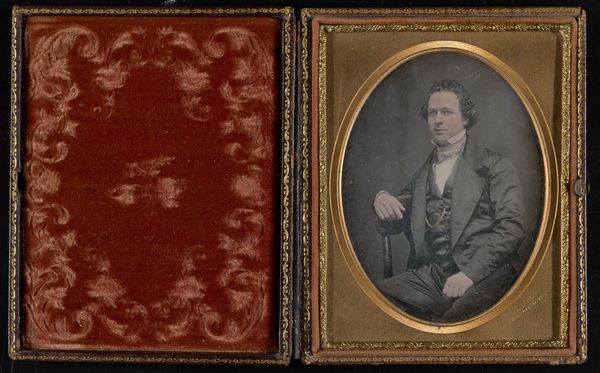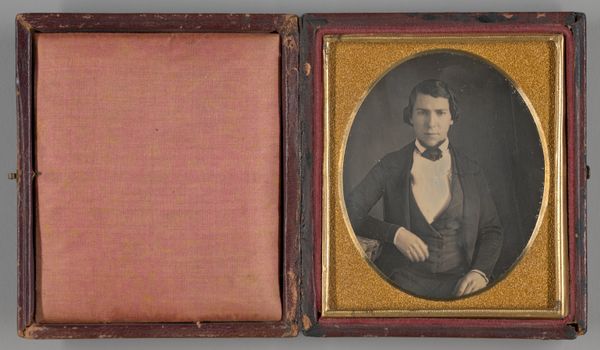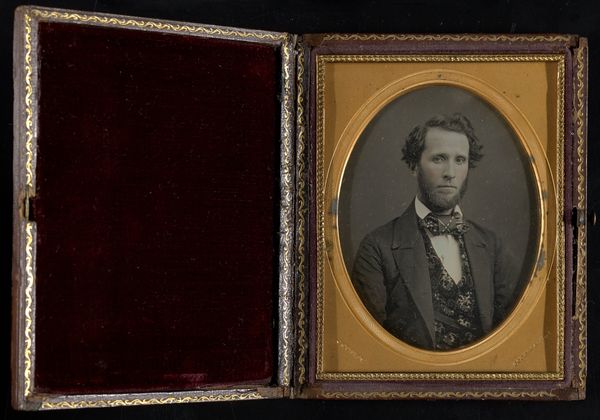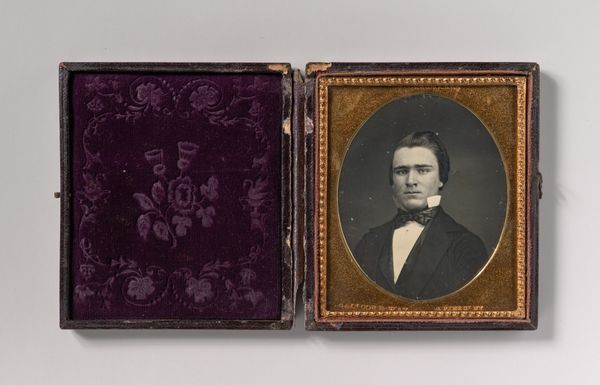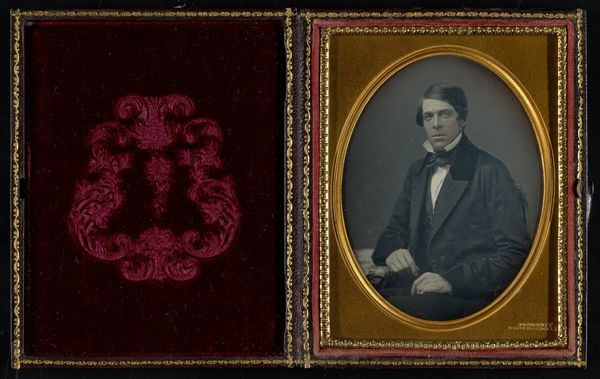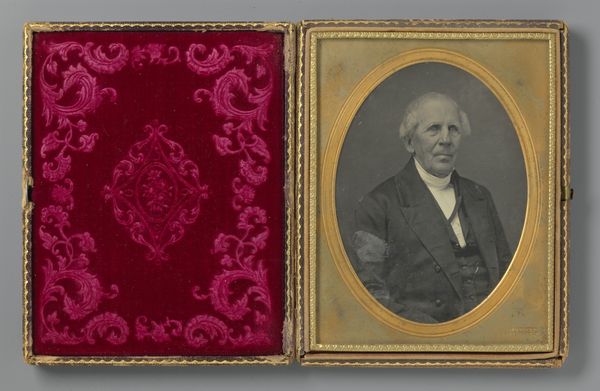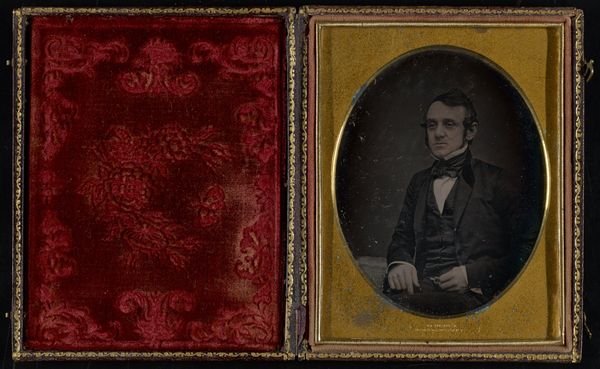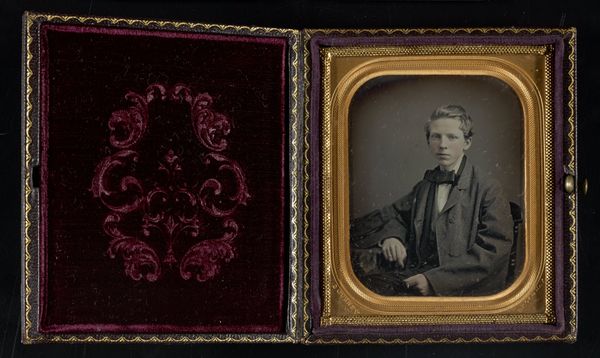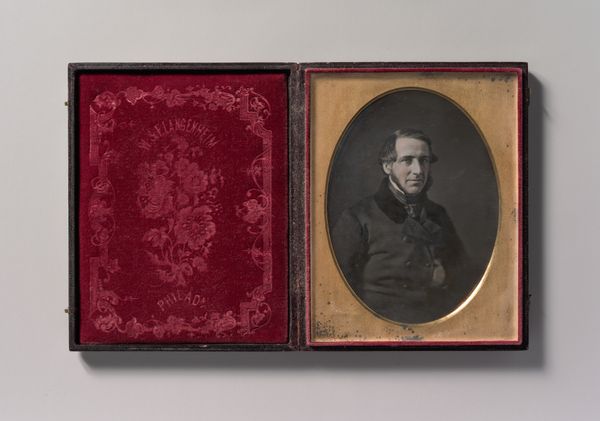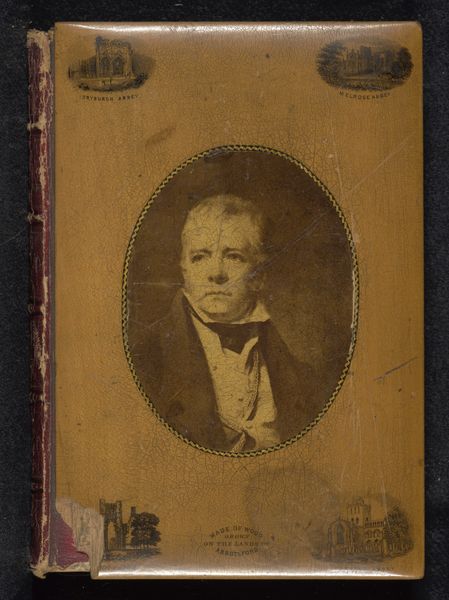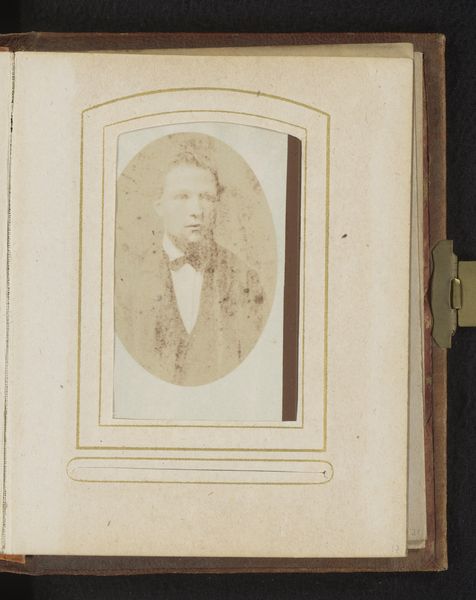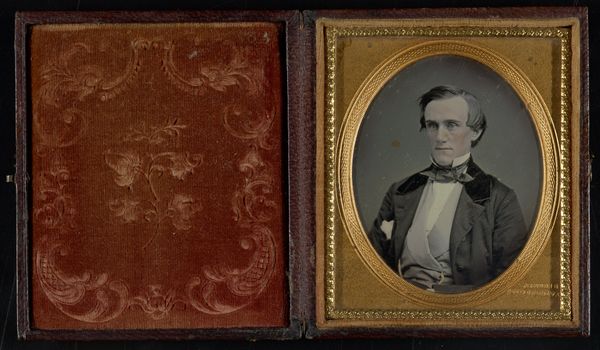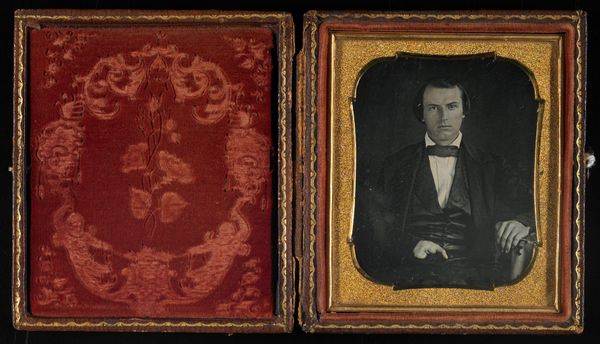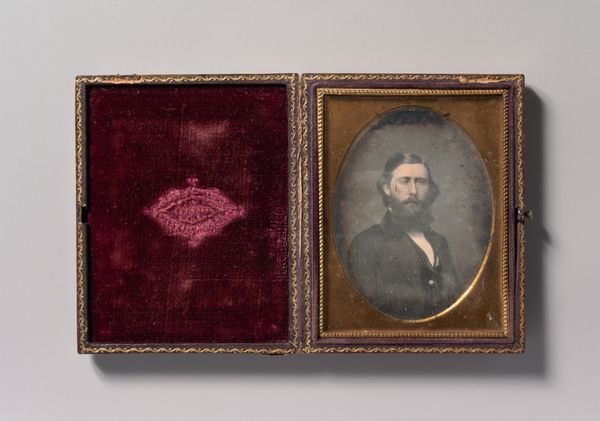![Untitled [half-length portrait of a gentleman] by Jeremiah Gurney](/_next/image?url=https%3A%2F%2Fd2w8kbdekdi1gv.cloudfront.net%2FeyJidWNrZXQiOiAiYXJ0ZXJhLWltYWdlcy1idWNrZXQiLCAia2V5IjogImFydHdvcmtzLzdhYWI5NjY3LWYzNTUtNGQ1ZC04ZjM2LWRjYzA1ZTNjMmJmNS83YWFiOTY2Ny1mMzU1LTRkNWQtOGYzNi1kY2MwNWUzYzJiZjVfZnVsbC5qcGciLCAiZWRpdHMiOiB7InJlc2l6ZSI6IHsid2lkdGgiOiAxOTIwLCAiaGVpZ2h0IjogMTkyMCwgImZpdCI6ICJpbnNpZGUifX19&w=3840&q=75)
Untitled [half-length portrait of a gentleman] 1852 - 1858
0:00
0:00
daguerreotype, photography
#
portrait
#
daguerreotype
#
photography
#
realism
Dimensions: 3 1/4 x 2 3/4 in. (8.26 x 6.99 cm) (image)3 13/16 x 3 1/8 x 11/16 in. (9.68 x 7.94 x 1.75 cm) (mount)
Copyright: Public Domain
Editor: This is a daguerreotype, "Untitled [half-length portrait of a gentleman]," created by Jeremiah Gurney between 1852 and 1858. The case is gorgeous! It’s interesting to consider how different this type of portraiture is from the portraits we're familiar with today. What can we understand about this work by examining the labor and materials used in its production? Curator: This portrait, indeed, gives us a window into a very specific socio-technical context. The daguerreotype, unlike later photographic processes, involved meticulous preparation of a silver-plated copper sheet. We should think about the cost associated with those materials, the specialized knowledge required, and even the chemicals used in its creation. Editor: So, it wasn't just pointing a camera and clicking? Curator: Absolutely not! The process involved polishing, sensitizing, exposing, and developing – all requiring skill. Each plate is unique, making it more akin to a handmade object. The final product, encased in velvet and leather, was considered a luxury item. Does that influence your perception? Editor: Yes, understanding it was a luxury object changes how I view the portrait, it suddenly appears so much more important and complex. How would its context change our understanding of the portrait if it were more readily available and inexpensive to produce? Curator: Precisely! Imagine the shift in meaning when photographic portraiture became democratized with later processes. This one, in its time, might signify a specific class identity, aspirations, or even the sitter’s place in the burgeoning industrial economy that was transforming society. The production itself contributes heavily to the art's contextual understanding. Editor: It’s fascinating to think about the labor and materiality behind something we typically view as a straightforward image. Thank you, I see that it is not merely an image of a gentleman, but an embodiment of a certain economic status and technology of that time. Curator: Exactly. By considering these material factors, we reveal hidden stories of consumption, craftsmanship and the historical context of early photography.
Comments
No comments
Be the first to comment and join the conversation on the ultimate creative platform.
